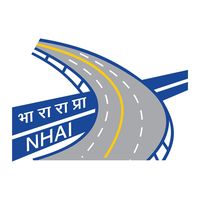Navigating Change: India's New Toll System and Highway Challenges
September 13, 2024, 5:00 pm

Location: India, Delhi, New Delhi
Employees: 1001-5000
Founded date: 1988
Total raised: $4.83B
India is at a crossroads. The government has introduced a new toll collection system, shifting from fixed rates to a distance-based model. This change is designed to make highway travel fairer and more economical. But it comes with its own set of challenges.
The National Highways Authority of India (NHAI) is at the helm of this transformation. The new system allows travelers to pay only for the distance they cover. No more paying for miles you don’t drive. This is a breath of fresh air for short-distance commuters. They can now travel up to 20 kilometers without incurring any toll fees. It’s a move aimed at easing the financial burden on those who use highways for local travel.
Technology is the backbone of this initiative. GPS tracking and automatic number plate recognition will ensure accurate toll calculations. This tech-driven approach promises to streamline the tolling process. Commuters can expect a smoother experience at toll plazas. No more long lines or disputes over charges. The NHAI aims to create a transparent system that benefits everyone.
Local businesses stand to gain as well. With reduced transportation costs, smaller enterprises can thrive. They often rely on highways for short trips. The new toll rules will help them save money, allowing for more investment in their operations.
However, not everything is smooth sailing. Critics have raised concerns about the readiness of toll plazas. Implementing the necessary technology across the board may take time. Initial hiccups could lead to delays and frustration. The NHAI must navigate these challenges carefully to ensure a successful rollout.
Meanwhile, the highways themselves are facing their own set of issues. Recent heavy rains have caused significant damage to key routes. Waterlogging and flooding have led to cracks and potholes. The NHAI has announced that repairs will begin soon. But the damage has already disrupted traffic and raised safety concerns.
The authority is coordinating with contractors to restore the highway’s operational capacity. Repair work will involve resurfacing the road and addressing underlying structural weaknesses. Engineers are also looking to improve drainage systems to prevent future water accumulation. This is not just about fixing the road; it’s about building resilience against unpredictable weather patterns.
Traffic management measures are in place to mitigate risks during repairs. Diversions and warning signs have been installed. Local police are assisting with traffic flow. Commuters are urged to exercise caution. Heavy vehicles are being redirected to alternate routes to reduce stress on the damaged section.
The impact of the damaged highway extends beyond safety. It disrupts logistics operations, affecting the transportation of goods and services. Industries that rely on timely shipments are feeling the pinch. Delays and increased transportation costs are becoming the norm. The NHAI’s swift action to repair the highway is crucial for restoring normalcy.
As the government pushes for modernization, these changes reflect a broader vision for India’s infrastructure. The distance-based tolling system is a step towards a more equitable travel experience. It aligns with the government’s goal of improving user experience on national highways. However, the success of this initiative hinges on effective implementation and overcoming initial challenges.
In the backdrop of these developments, the renewable energy sector faces its own hurdles. A recent report highlights land conflicts and population density as significant barriers to achieving India’s renewable energy goals. The country has the potential to surpass 24,000 gigawatts of renewable energy capacity. Yet, realizing even a fraction of this is fraught with challenges.
The report emphasizes the need for strategic planning. As India aims for net-zero emissions by 2070, addressing land and water availability is crucial. The renewable energy revolution must be rooted in justice and equity. This is a call to action for governments and industries alike.
In conclusion, India is navigating a complex landscape. The new toll collection system promises fairer travel for commuters. Yet, the challenges of highway maintenance and renewable energy development loom large. The path forward requires careful planning, technological integration, and a commitment to sustainability. As the nation moves ahead, the focus must remain on building a resilient infrastructure that meets the needs of all its citizens.
The National Highways Authority of India (NHAI) is at the helm of this transformation. The new system allows travelers to pay only for the distance they cover. No more paying for miles you don’t drive. This is a breath of fresh air for short-distance commuters. They can now travel up to 20 kilometers without incurring any toll fees. It’s a move aimed at easing the financial burden on those who use highways for local travel.
Technology is the backbone of this initiative. GPS tracking and automatic number plate recognition will ensure accurate toll calculations. This tech-driven approach promises to streamline the tolling process. Commuters can expect a smoother experience at toll plazas. No more long lines or disputes over charges. The NHAI aims to create a transparent system that benefits everyone.
Local businesses stand to gain as well. With reduced transportation costs, smaller enterprises can thrive. They often rely on highways for short trips. The new toll rules will help them save money, allowing for more investment in their operations.
However, not everything is smooth sailing. Critics have raised concerns about the readiness of toll plazas. Implementing the necessary technology across the board may take time. Initial hiccups could lead to delays and frustration. The NHAI must navigate these challenges carefully to ensure a successful rollout.
Meanwhile, the highways themselves are facing their own set of issues. Recent heavy rains have caused significant damage to key routes. Waterlogging and flooding have led to cracks and potholes. The NHAI has announced that repairs will begin soon. But the damage has already disrupted traffic and raised safety concerns.
The authority is coordinating with contractors to restore the highway’s operational capacity. Repair work will involve resurfacing the road and addressing underlying structural weaknesses. Engineers are also looking to improve drainage systems to prevent future water accumulation. This is not just about fixing the road; it’s about building resilience against unpredictable weather patterns.
Traffic management measures are in place to mitigate risks during repairs. Diversions and warning signs have been installed. Local police are assisting with traffic flow. Commuters are urged to exercise caution. Heavy vehicles are being redirected to alternate routes to reduce stress on the damaged section.
The impact of the damaged highway extends beyond safety. It disrupts logistics operations, affecting the transportation of goods and services. Industries that rely on timely shipments are feeling the pinch. Delays and increased transportation costs are becoming the norm. The NHAI’s swift action to repair the highway is crucial for restoring normalcy.
As the government pushes for modernization, these changes reflect a broader vision for India’s infrastructure. The distance-based tolling system is a step towards a more equitable travel experience. It aligns with the government’s goal of improving user experience on national highways. However, the success of this initiative hinges on effective implementation and overcoming initial challenges.
In the backdrop of these developments, the renewable energy sector faces its own hurdles. A recent report highlights land conflicts and population density as significant barriers to achieving India’s renewable energy goals. The country has the potential to surpass 24,000 gigawatts of renewable energy capacity. Yet, realizing even a fraction of this is fraught with challenges.
The report emphasizes the need for strategic planning. As India aims for net-zero emissions by 2070, addressing land and water availability is crucial. The renewable energy revolution must be rooted in justice and equity. This is a call to action for governments and industries alike.
In conclusion, India is navigating a complex landscape. The new toll collection system promises fairer travel for commuters. Yet, the challenges of highway maintenance and renewable energy development loom large. The path forward requires careful planning, technological integration, and a commitment to sustainability. As the nation moves ahead, the focus must remain on building a resilient infrastructure that meets the needs of all its citizens.
